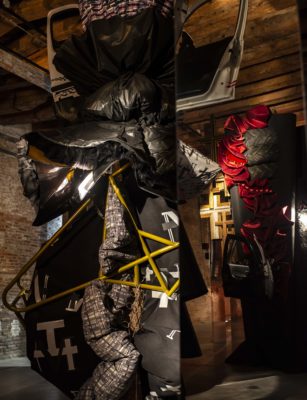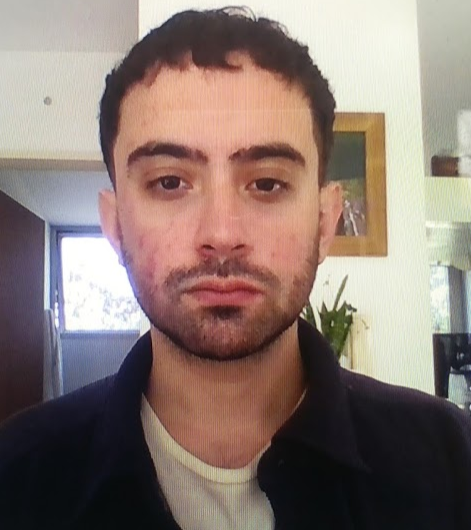Search
To search for an exact match, type the word or phrase you want in quotation marks.
A*DESK has been offering since 2002 contents about criticism and contemporary art. A*DESK has become consolidated thanks to all those who have believed in the project, all those who have followed us, debating, participating and collaborating. Many people have collaborated with A*DESK, and continue to do so. Their efforts, knowledge and belief in the project are what make it grow internationally. At A*DESK we have also generated work for over one hundred professionals in culture, from small collaborations with reviews and classes, to more prolonged and intense collaborations.
At A*DESK we believe in the need for free and universal access to culture and knowledge. We want to carry on being independent, remaining open to more ideas and opinions. If you believe in A*DESK, we need your backing to be able to continue. You can now participate in the project by supporting it. You can choose how much you want to contribute to the project.
You can decide how much you want to bring to the project.

There probably isn’t a more remote dimension of the experience of Argentinean art than the Venice Biennale, and Sharjah or Kassel are as equally far away: the horizon of expectations of these events implies negotiating with an art that exists in frank opposition to the specific possibilities of the material imagination that prevails in the southern Atlantic.
Beyond the reflexive distance contained in the dilemma of self-representation (unlike documenta or the biennales held in the oil countries, a ‘national’ image of art is also defined in Venice), the true rift is the one that separates contemporary art from the art produced in a context of underdeveloped capitalism.
Argentina never quite adapted to the productive model of semiotic-industrial capitals in the late twentieth century, although this hasn’t prevented Argentinean artists of the last two decades of the century from carrying out formal and conceptual experiments to advance towards the pristine, hyperfunctional substance of contemporaneity. While such experiments were almost always prone to fail, those projects that did prove successful (Faivovich & Goldberg, Adrián Villar Rojas or Tomás Saraceno) felt removed from the various aspects of local tradition and no account of deterritorialisation could possibly justify them in political terms inside the country.
The case of Venice is similar: in the eyes of Argentinean audiences the biennale doesn’t exist, and yet for the young and impoverished local art community it is an unattainable mental and financial necessity. Contemporary Argentinean art, like the country’s economic development, remains an incomplete story, impossible to measure in quantitative terms.
This obviously doesn’t have to be understood in negative terms; the conversation regarding the problems of provincialism and periphery spreads like an eternal bonfire through galleries, art schools and small textual spaces for critical reflection. And while many artists are actively engaged in combating the frustrating impression of feeling condemned to dreaming low and settling for little, the best or most representative Argentinean art seems indeed to be the lowest: the art that tends to look to the past rather than to the future, to the home-made rather than to the manufactured; that bows to flowers and to the soil rather than to the Internet, to poverty above all else.
History suggests that certain paths of formal exploration are the exclusive patrimony of those countries that crossed the tunnel of modernity and came out the other end with their culture disrupted yet intact. So should a young, dispossessed nation like Argentina aspire to imitate the internationalist vocabulary of art? What are the implications of having a national pavilion in Venice, which was recovered during the presidency of Cristina Fernández de Kirchner almost a decade ago? In what terms is this kind of sovereignty desirable if nobody knows what to do with it? To a certain extent it’s the same as wondering whether South American rulers should attend to advice concerning the domestic economy offered by the Financial Times.
Mariana Telleria (Rufino, 1979) was chosen at the end of 2018 to present a sculptural installation in the former arsenals during the 58th Venice Biennale. Although she didn’t explicitly answer any of these questions, her work justifies our asking them.
The Name of a Country is the evocative title given to its display in the form of great vertical structures, vaguely defined figures that emerge out of baroque folds and moulage rather than out of anatomical connections. Car bumpers and lights, pieces of wood, chains, mirrors and religious statuettes complete the look of these seven entropic menhirs aligned inside the pavilion. Faceless and featureless, they are bodies without organs and bodies without limbs; the country with a name that is never mentioned, because it is no name and no country.
Telleria’s Venetian work is characterised by this vagueness of terms. Furthermore, the artist decided to do without an integral light system in the pavilion, preferring instead to create a gloomy atmosphere that evoked the terror of imagining the interior of the Basilica of St John Lateran by night, the rictus of the giant apostles cloaked in darkness and silence.
In this sense her work – which is noted for its expressive technicality – somehow seems to engage with the dilemma of the distance separating Argentina from the Biennale and, above all, separating South American art from the contemporary art of industrialised cultures. Regardless of the fact that it is a costly and complex work, seen through the Internet and separated by eleven thousand kilometres from its ideal hypothetical audience, the scale of these huge pillars melts completely and its details are lost in the dimness of the hall, transforming it into a strange symbol of obfuscation rather than of political clarity. The Name of a Country leaves barely no room for grasping its content; the situation is hard to portray without the characteristic selfie point that the most active of exhibition-making curators recommend be included in all installations.
The image that this installation throws back to Argentineans is deliberately confusing and sinister, contrary to the sharpness and deep literality of works like The Horse Problem by sculptress Claudia Fontes, guest artist at the previous Biennale whose work is more in line with the art of Lorenzo Quinn than with any form of complication.
Hence, Telleria rejects the responsibility of meeting the demands of the community of sentiment or of the imagination’s more populist rules and distances herself from the rhetoric of Quinn or Christoph Büchel. Her sculptures, as hermetic as they are baroque, entail a materialist ethics of their development, of the lyrical and whimsical subjectivity they embody.
Precariousness is a sort of glossolalia that Argentinean artists secretly share and speak fluently, an internal sign of complicity. On the international scale, the place of this common code seems to be taken by the unsubstantial humanistic comment established by Ralph Rugoff as the discursive horizon of this year’s Biennale. In contrast to these two lines, it is obvious how Mariana Telleria gradually abandoned the neo-conceptual language that characterised the onset of her career (and drew her towards artists like Gabriel Orozco or Jorge Macchi, assimilated by the international art circuit) to embrace an almost expressionistic monumental abstraction, silent and confusing. Her interpretation of the political is then assembled starting from distance and darkness, which is why it isn’t hard to imagine her responding to the expectations of an audience that demands clear definitions saying something like ‘If you want reality, read the newspaper (which, by the way, lies more than art).’
(Highlight image: Mariana Telleria, El nombre de un país, 2019)

"A desk is a dangerous place from which to watch the world" (John Le Carré)